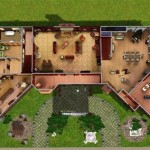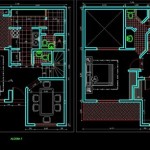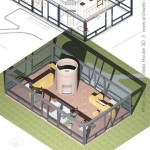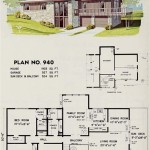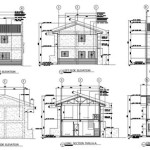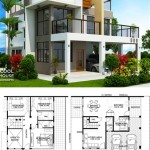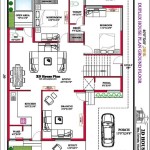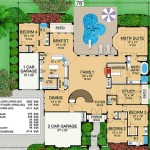Largest Modular Home Floor Plans: Exploring Spacious Living Options
Modular homes, also known as prefabricated homes, are constructed in a controlled factory environment and then transported to the building site for assembly. This construction method offers numerous advantages, including faster build times, cost-effectiveness, and quality control. While often associated with smaller, simpler designs, modular construction is capable of producing expansive and luxurious residences. This article explores the possibilities of large modular home floor plans, highlighting the design considerations, benefits, and available options for those seeking substantial living spaces constructed using modular technology.
The perception of modular homes as being limited in size and design is a common misconception. Advancements in modular construction techniques and engineering now allow for the creation of homes with square footage comparable to traditionally built houses. These expansive modular homes offer a viable alternative for individuals and families who desire large, customized living spaces without the lengthy construction timelines and potential cost overruns associated with conventional building methods. The key to realizing a large modular home lies in understanding the design process and the capabilities of modular manufacturers.
Design Considerations for Large Modular Homes
Designing a large modular home requires careful planning and attention to detail. The initial step involves collaborating with an architect or designer experienced in modular construction. This professional will help translate the client's vision into a feasible and structurally sound design that adheres to modular construction principles. Several factors must be considered during the design phase:
Module Size and Configuration: Modular homes are built in sections, or modules, that are then joined together on-site. The size and configuration of these modules are crucial for efficient transportation and assembly. The design must account for transportation limitations, such as road widths and height restrictions, which can impact the dimensions of individual modules. A well-designed modular home maximizes the use of module space while minimizing on-site assembly work.
Structural Integrity: Large modular homes require robust structural engineering to ensure stability and durability. The design must account for load-bearing walls, roof support, and the connection points between modules. Engineering considerations are particularly important for multi-story homes or those with complex architectural features. Modular manufacturers typically employ engineers who specialize in modular construction to ensure that the design meets all relevant building codes and standards.
Customization and Aesthetics: One of the primary advantages of modular construction is the ability to customize the design to meet specific needs and preferences. Large modular homes can incorporate a wide range of architectural styles and features, including open floor plans, gourmet kitchens, luxurious bathrooms, and custom finishes. The design process should allow for flexibility and personalization while maintaining the efficiency and cost-effectiveness of modular construction.
Site Preparation: Proper site preparation is essential for the successful installation of a modular home. The foundation must be level and structurally sound to support the weight of the modules. The site should also be cleared of any obstacles and prepared for utility connections, such as water, sewer, and electricity. A thorough site assessment should be conducted to identify any potential challenges and ensure that the site is suitable for modular construction.
Transportation and Logistics: The transportation of modules from the factory to the building site requires careful planning and coordination. The modules must be securely loaded onto trucks and transported along designated routes, adhering to all traffic regulations. The delivery schedule should be coordinated with the on-site construction team to ensure that the modules are delivered in the correct order and at the appropriate time. Any delays or disruptions in transportation can impact the overall project timeline.
Benefits of Choosing Large Modular Home Floor Plans
Opting for a large modular home floor plan offers several distinct advantages over traditional construction methods:
Faster Construction Time: Modular construction significantly reduces construction time compared to conventional building. Because the modules are constructed in a factory simultaneously with site preparation, the overall project timeline is considerably shorter. This accelerated construction schedule allows homeowners to move into their new homes sooner, saving time and money.
Cost-Effectiveness: Modular construction can be more cost-effective than traditional building methods. The controlled factory environment minimizes waste and reduces the likelihood of weather-related delays. The streamlined production process also allows for economies of scale, reducing material costs and labor expenses. While the upfront investment in modular homes can be similar to traditional construction, the long-term cost savings can be substantial.
Quality Control: Modular homes are built to stringent quality control standards in a factory setting. The controlled environment minimizes the impact of weather and other external factors, ensuring consistent quality throughout the construction process. Modules are inspected at various stages of production to identify and correct any defects before they are transported to the building site. This rigorous quality control process results in a higher-quality finished product.
Customization Options: Despite the perception of limited design choices, modular homes offer a wide range of customization options. Homeowners can choose from a variety of floor plans, architectural styles, and finishes to create a home that meets their specific needs and preferences. Modular manufacturers can also accommodate custom designs and modifications, allowing for personalized touches and unique architectural features. The level of customization available in modular construction rivals that of traditional building methods.
Sustainability: Modular construction is inherently more sustainable than traditional building. The controlled factory environment minimizes waste, and modular manufacturers often use sustainable building materials and practices. The energy efficiency of modular homes can also be improved through the use of advanced insulation, energy-efficient windows, and renewable energy systems. Choosing a modular home can reduce the environmental impact of construction and contribute to a more sustainable lifestyle.
Reduced Disruption: Because the majority of the construction takes place in a factory, there is significantly less disruption to the surrounding neighborhood compared to traditional building. The on-site assembly process is relatively quick and quiet, minimizing noise and dust pollution. This is particularly beneficial in densely populated areas or when building near existing homes.
Examples of Large Modular Home Floor Plans
The range of available floor plans for large modular homes is extensive. Several manufacturers specialize in crafting expansive homes with diverse architectural styles. The following are examples of common floor plan configurations and architectural styles currently available:
Ranch-Style Homes: Ranch-style homes are characterized by their single-story design and open floor plans. Large modular ranch homes can easily incorporate multiple bedrooms, bathrooms, and living areas, making them ideal for families or individuals who prefer single-level living. The spacious layout and easy accessibility make ranch-style homes a popular choice for those seeking comfort and convenience.
Two-Story Homes: Two-story modular homes offer ample living space on two levels. These homes can be designed with a variety of floor plan configurations, including traditional layouts with separate living and dining areas, or more open and contemporary designs. Two-story homes are a great option for maximizing square footage on smaller lots and can accommodate large families or individuals who need extra space.
Cape Cod Homes: Cape Cod homes are known for their classic New England charm and distinctive architectural features, such as steep roofs, dormers, and shingle siding. Large modular Cape Cod homes can be designed with multiple bedrooms, bathrooms, and living areas, while maintaining the traditional aesthetic appeal. These homes offer a timeless and comfortable living environment.
Modern and Contemporary Homes: Modern and contemporary modular homes feature clean lines, open floor plans, and large windows. These homes often incorporate sustainable building materials and energy-efficient technologies. Large modular modern homes can be designed with a variety of architectural features, such as flat roofs, cantilevered decks, and floor-to-ceiling windows, creating a stylish and contemporary living space.
Farmhouse Style Homes: Farmhouse style homes evoke a sense of rustic charm and comfort. These homes typically feature large porches, shiplap walls, and country-style kitchens. Large modular farmhouse homes can be designed with multiple bedrooms, bathrooms, and living areas, while maintaining the cozy and inviting atmosphere of a traditional farmhouse. This style is particularly popular with those seeking a connection to nature and a relaxed living environment.
Ultimately, selecting the appropriate floor plan requires careful consideration of family size, lifestyle, and budget. Visiting model homes or viewing online floor plan galleries can provide valuable inspiration and help potential homeowners visualize their dream modular home. Consulting with a reputable modular home manufacturer or builder is crucial to discuss specific needs, preferences, and budget constraints. This collaborative approach ensures that the final design aligns with the homeowner's vision while remaining structurally sound and cost-effective.

Two Story Modular Manufactured And Home Builder

Triple Wide Floor Plans Mobile Homes On Main

Triple Wide Floor Plans Mobile Homes On Main

Floor Plans Austin Tx Modular Homes

Triple Wide Floor Plans Mobile Homes On Main

Two Story Modular Manufactured And Home Builder

Floor Plans Austin Tx Modular Homes

2024 S Best New Manufactured Home Design Winner Mobile Living Floor Plans Modular Homes

Triple Wide Floor Plans Mobile Homes On Main

Two Story Modular Manufactured And Home Builder

